
Archives

Archive for May, 2010 | ||||||||||||||||||||||||||||||||||||||||||||||||||||||||||||||||||||||||||
Standard Custom with a Brazilian TwistPosted on May 5, 2010 | Click for larger images
| The Brazilian rosewood peghead overlay is the first of some subtle (and some not so subtle) customizations to this Standard Custom. Here's a close up of one of our luthiers bringing the mitered celluoid ivoroid binding to the Brazilian peghead face. 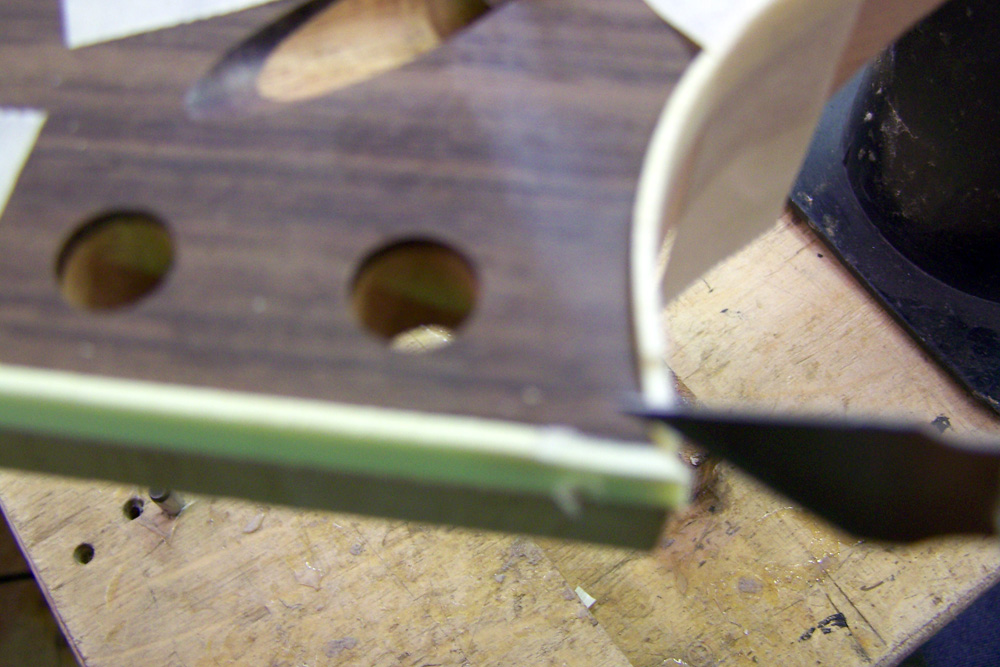
Do you notice something different about the inlaid mother of pearl logo? It's been moved up to the tip of the peghead like early Standards. The difference is the use of mother of pearl for the logo rather than the paint transfer process that we employed in earlier years. 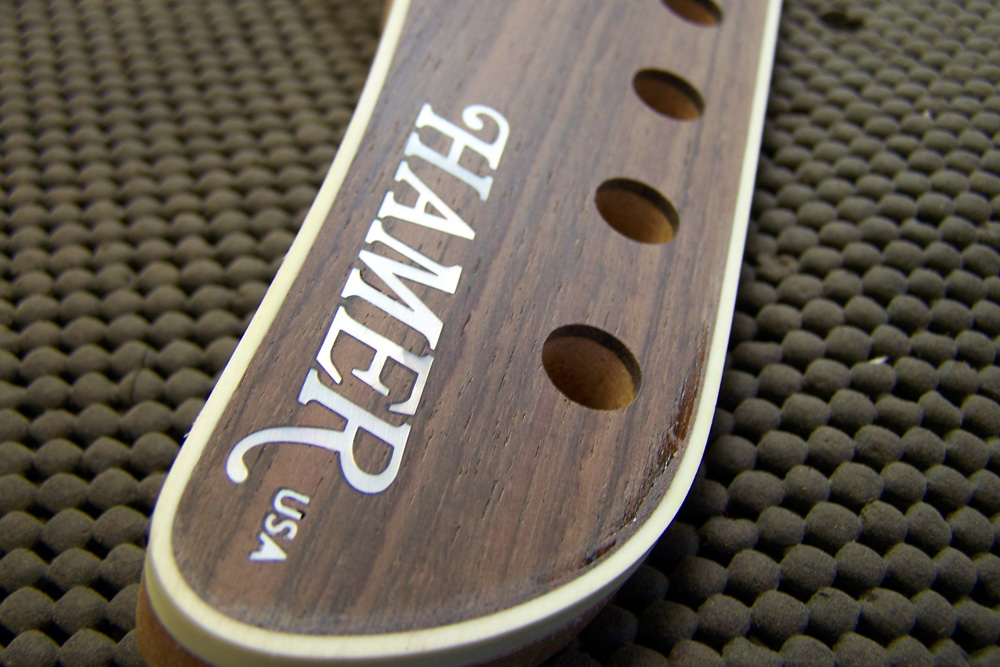
| 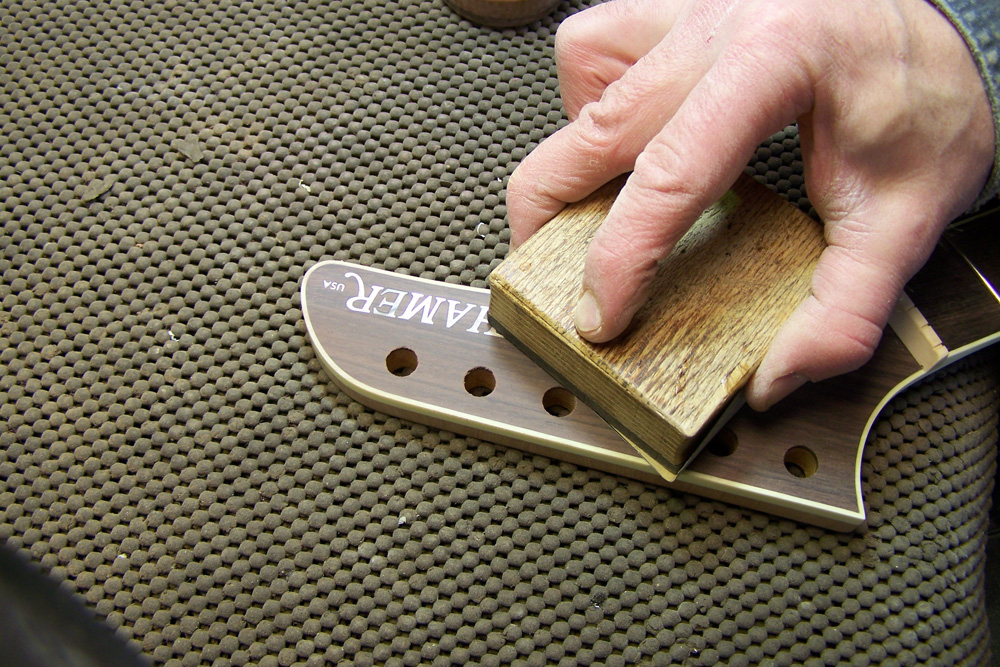
To insure ultimate flatness, we hand block the peghead. Using a block to sand the peghead results in superior flatness to a power sander. 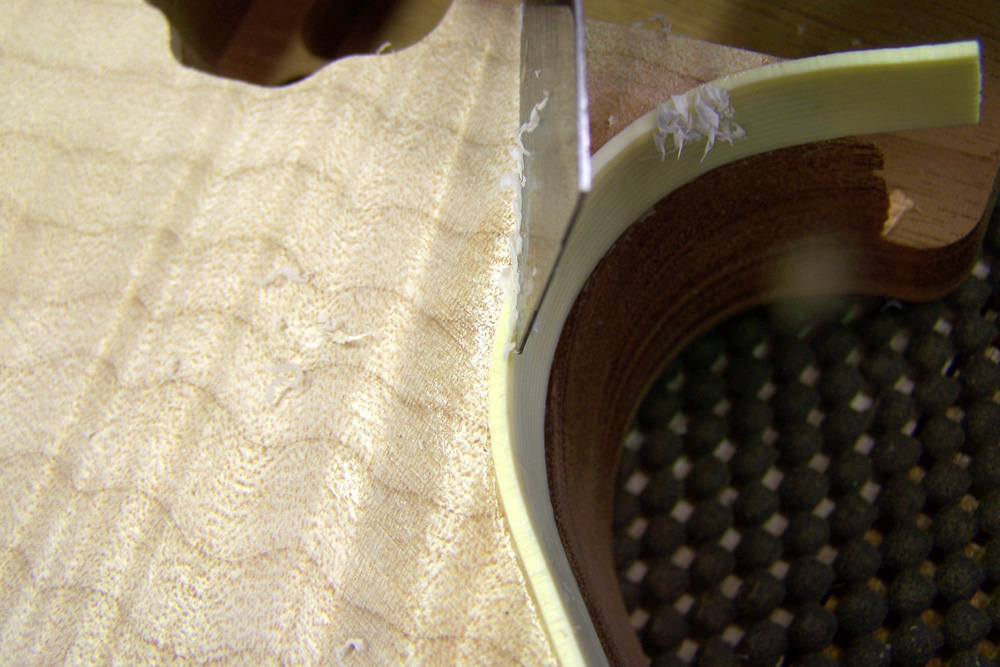
Using a hand scraper, we flush cut the body binding to the top of the guitar. 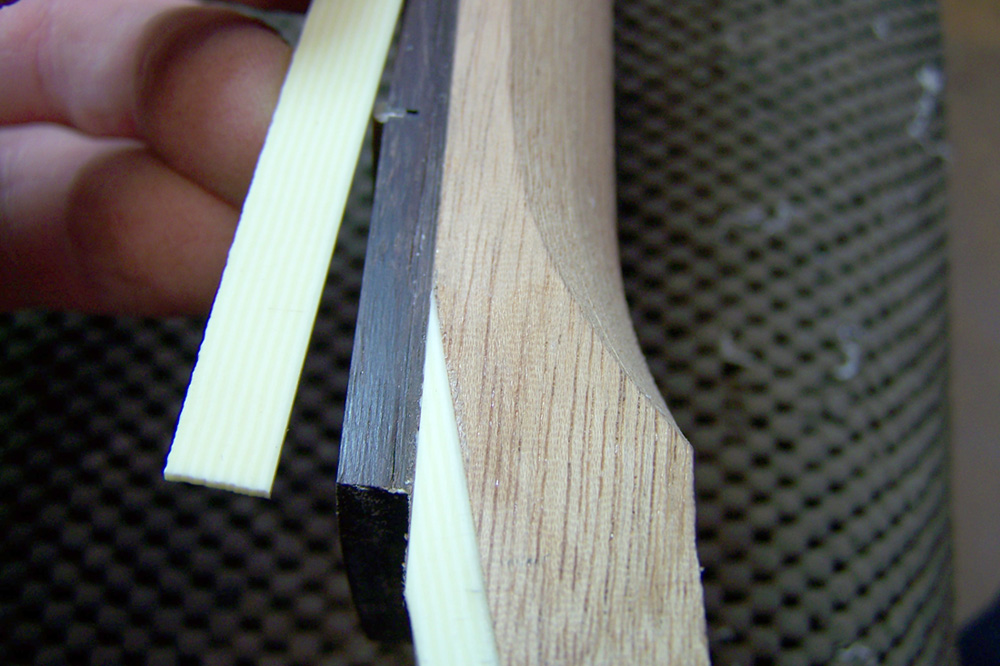
Here we are hand fitting the fingerboard binding for a seamless transition to the peghead binding. The fingerboard binding extends above the fret bead and then is filed flush with the fingerboard, another meticulous detail that we attend to.
| 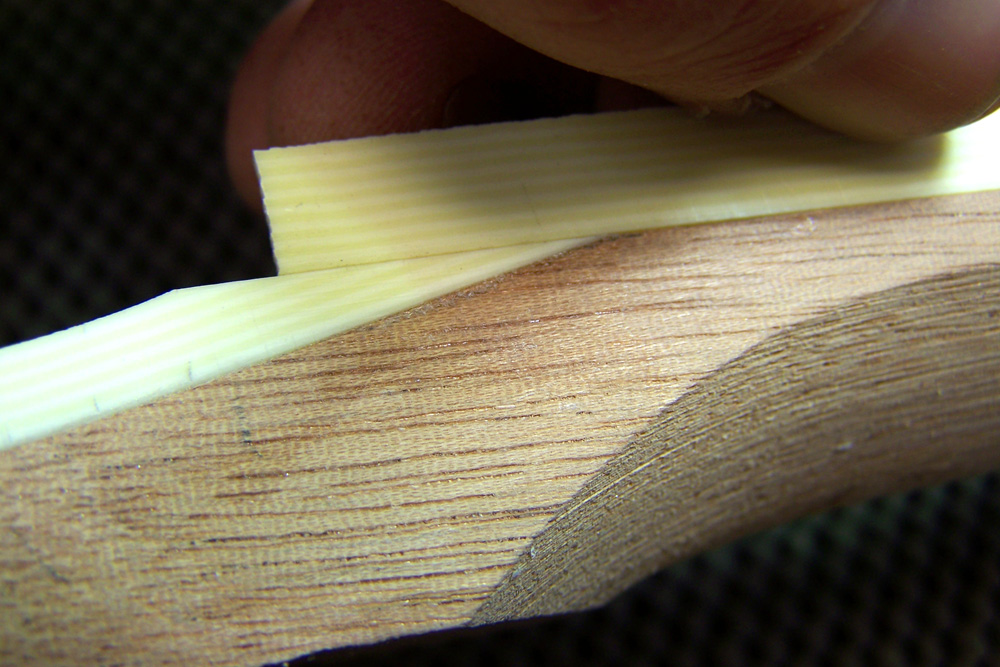
Here's a shot of the binding after it's been bonded to the fingerboard. The neck heels on all Standards are hand carved into the body. Using a rasp to blend the body and neck into one results in a high level of playing comfort at the upper frets. 
Here we are filling the pores of the wood with paste wood filler. After it is applied, we rub the filler cross grain into the pores of the wood. To insure that the wood pores are completely filled, we go through this entire filling process twice. We refer to this practice as "double filling". We then let the filler dry for two days prior to bringing the guitar into the spraybooth. 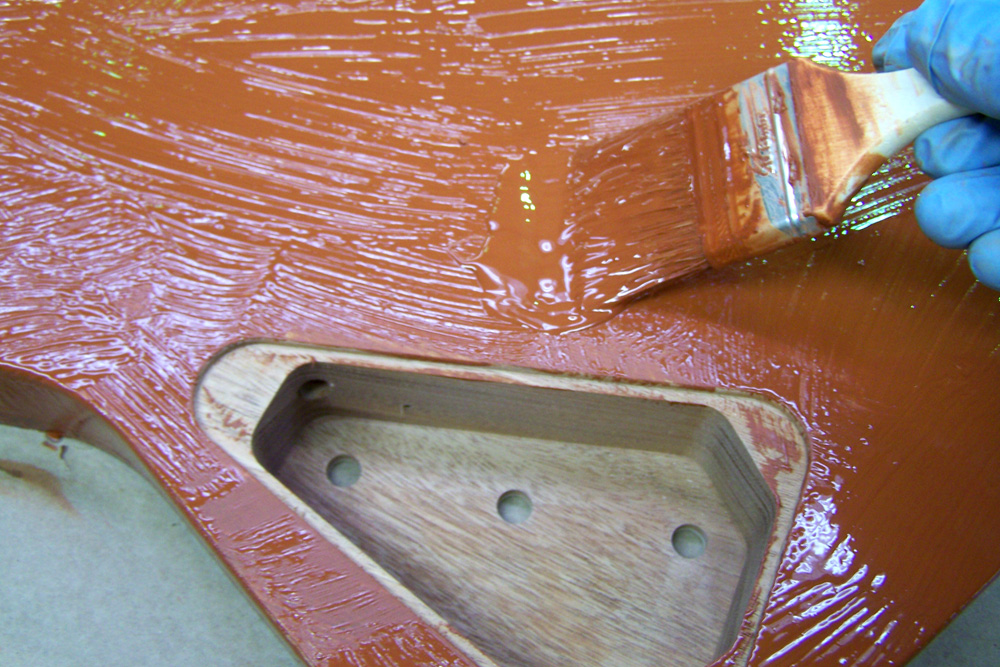
Because Hamer necks follow the taper of the fingerboard, they can only be fit into the body vertically, rather than slid into the neck rout like so many other guitars. An added benefit for this overengineered stability is that the entire fingerboard is supported by the neck. 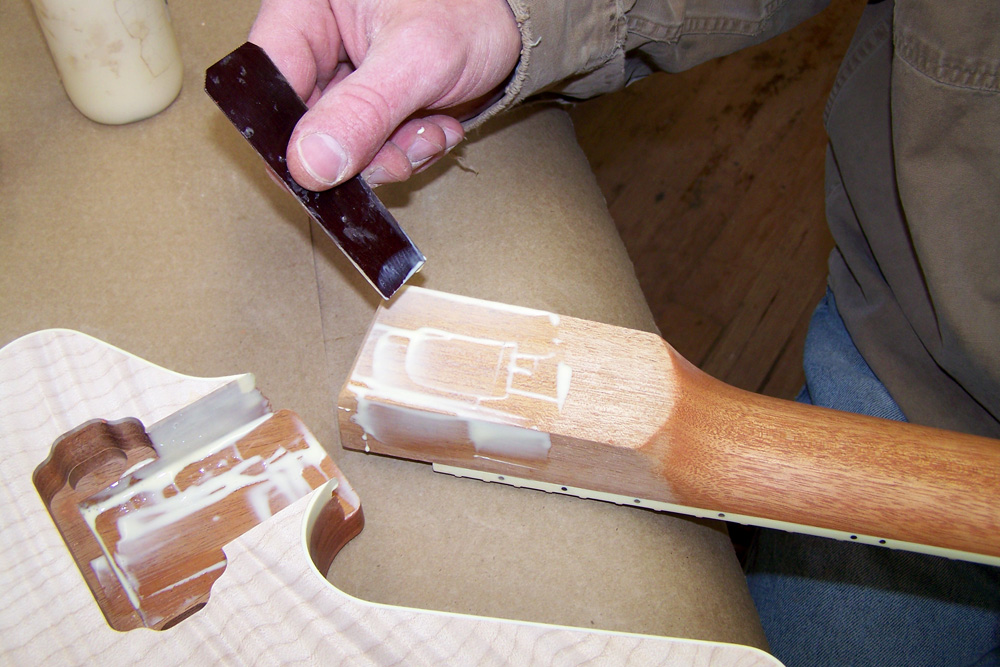
The customer requested "wide randlom flame" maple. He should be happy with this top. Notice the mother of pearl crown fingerboard inlays, another tip of our hat to Hamer's past. We use a simple "C" clamp to hold the neck and body together during the bonding process. Because our neck joints are so tight we don't need anything elaborate. Sometimes the tried and true methods work the best. Wait until you see the finish on this guitar. Unlike some of the other customizations, it's not so subtle. 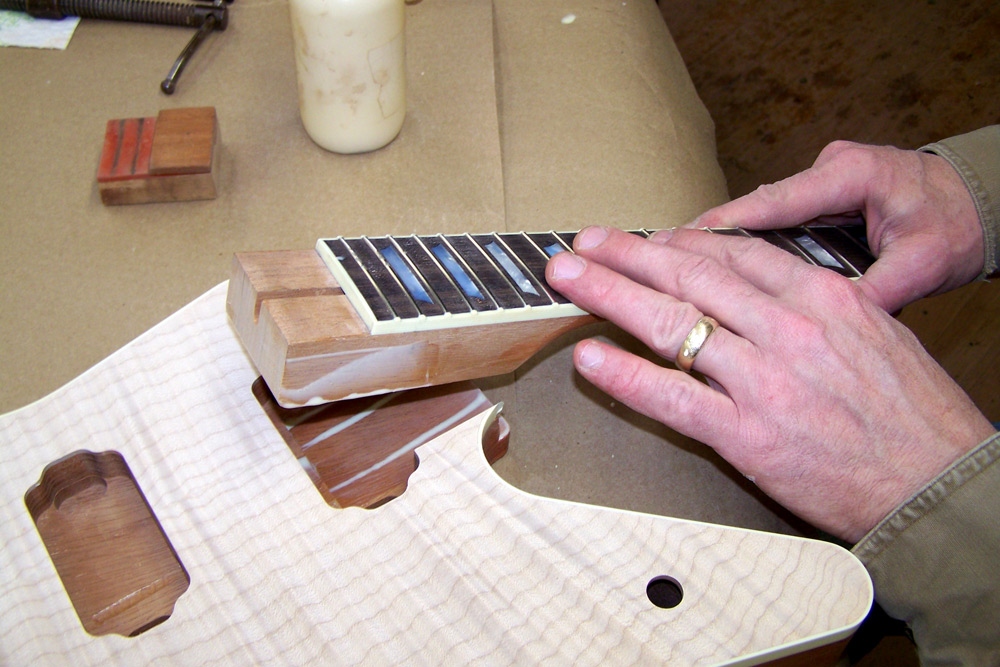
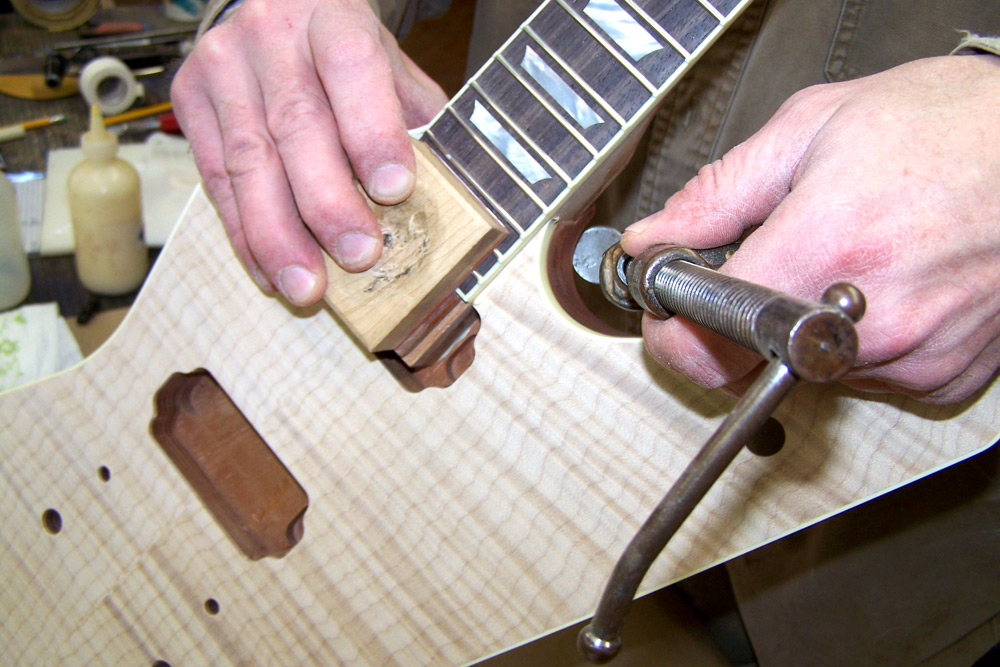
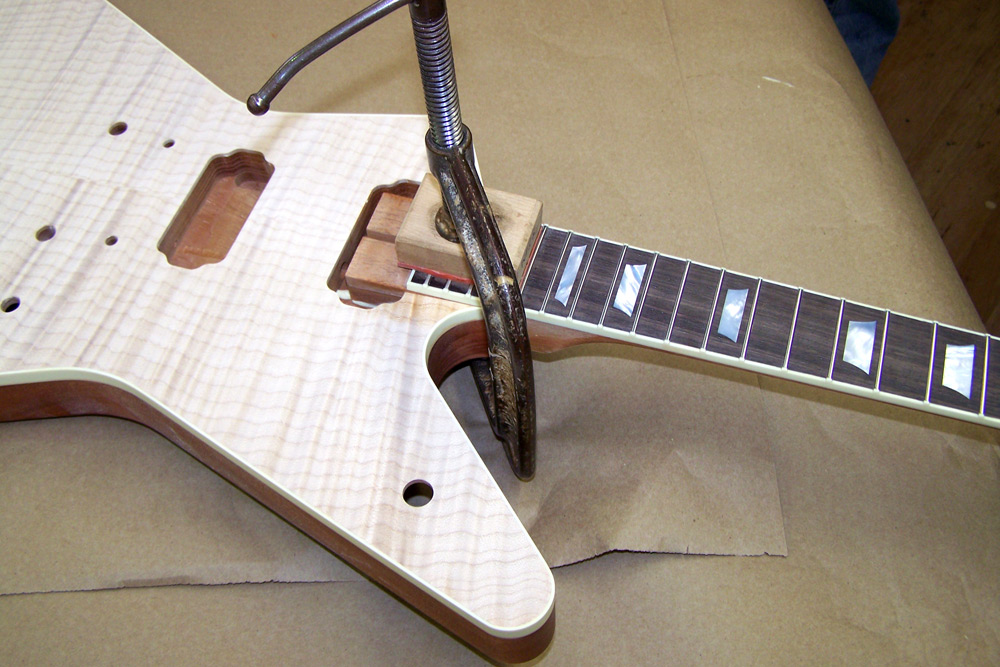
| Another Quilt Top Tiger Eye Comes Through The ShopPosted on May 12, 2010
| We completed the woodworking on this Artist Custom and are now readying it for the spraybooth. If you're interested in how we stain the top Tiger Eye, check out the post on the left handed Artist Custom where we walked through the entire staining process. Like the lefty, this Artist has a breathtakingly beautiful top. The AAAA quilted maple has a tight bubble like look. This Hamer boasts a Brazilian rosewood fingerboard with ten Victory inlays. 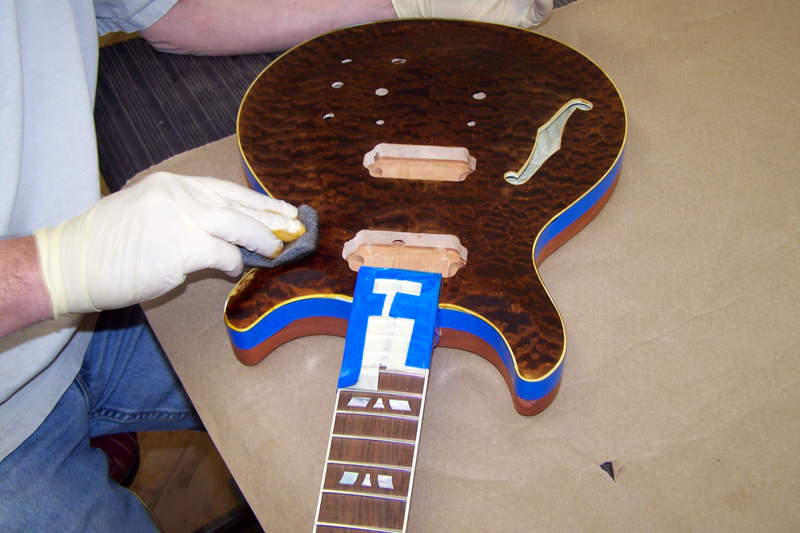
One feature of the Tiger Eye is that while it is a dark finish, it highlights the quilt, rather than masking it. The woods that we use are so difficult to procure that it always makes us feel good when they are featured. We bound the f-hole of this beauty with celluloid binding, always a nice touch. 
One more shot for those of you who really appreciate Ultimate Grade quilt maple. 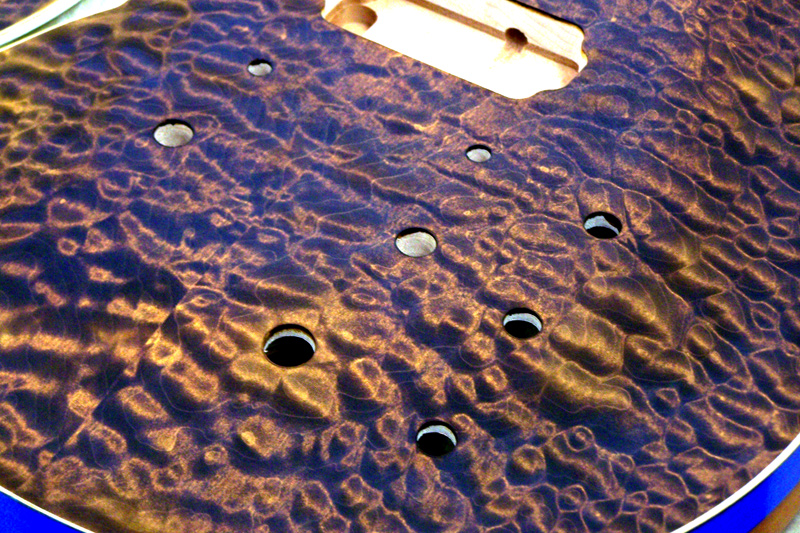
Here's Gary applying the stain to a matching quilted peghead veneer. We cut the quilt for the peghead from the same billet that we use for the bookmatched top. It really is a matched peghead veneer. 

Nice contrast between the top and the f-hole binding. 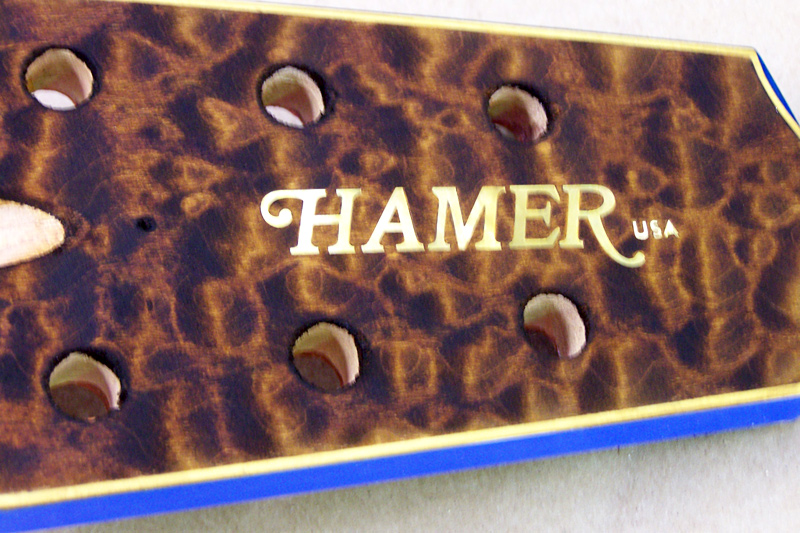
What a gorgeous peghead. 
For those of who can't get enough of a good thing... 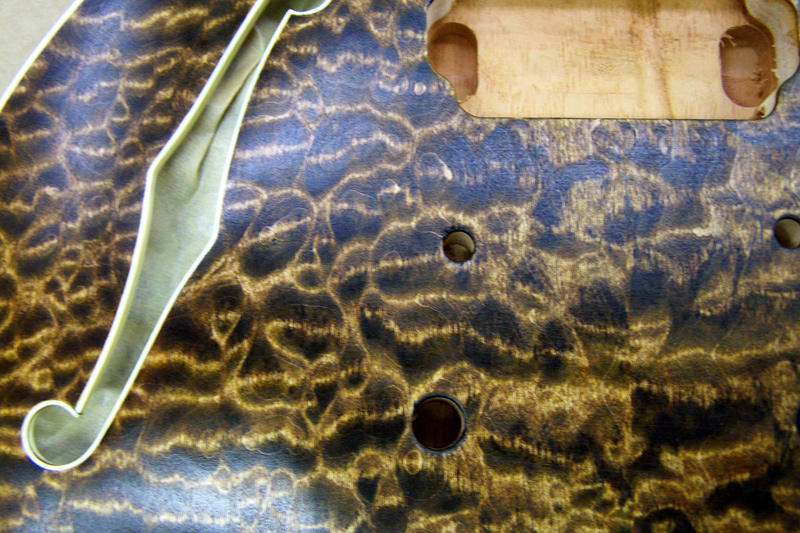
So that there isn't any overspray in the sound chamber, we tape off the interior of the f-hole. The mother of pearl Hamer logo provides a pretty contrast with the Tiger Eye quilt maple as well. We'll catch up with this guitar again once it's a bit further along. 
| Standard Brazilian Goes Green!Posted on May 19, 2010
| When we last showed you this Standard, we told you about some of the more subtle customizations such as the Brazilian peghead overlay, the Hamer mother of pearl logo being moved to the tip of the peghead and the wide flame maple top. Now comes the not so subtle part, the green Sunburst finish. Gary starts out with a light color coat. 
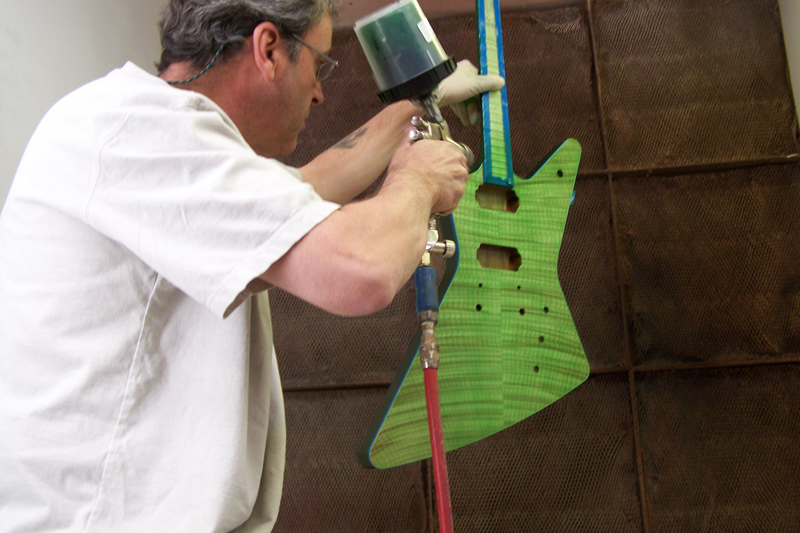
We use gravity feed siphon cups when we spray our colors. 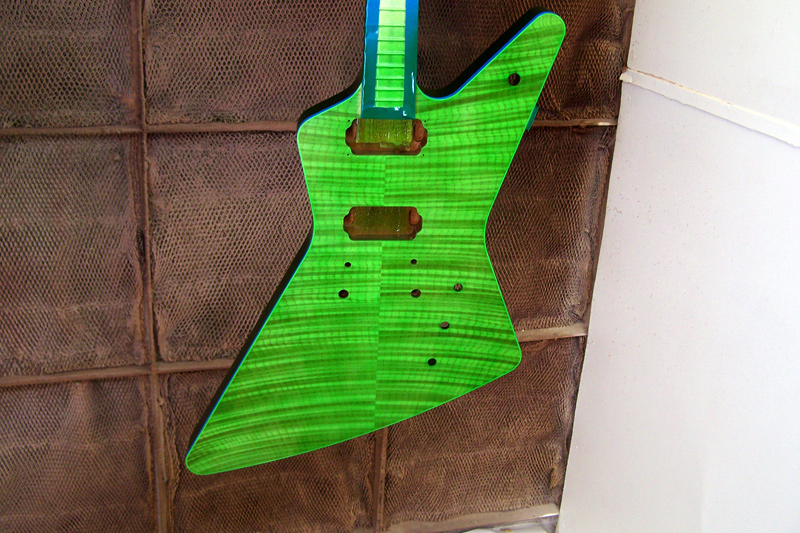
Here's the guitar prior to bursting. Gary's darkening up the edges to achieve the Green Sunburst. This is a green to green Sunburst, with no yellow involved. 
The sides, back and neck are sprayed a matching transparent green. We'll try to get you some more photos as this guitar gets closer to completion. 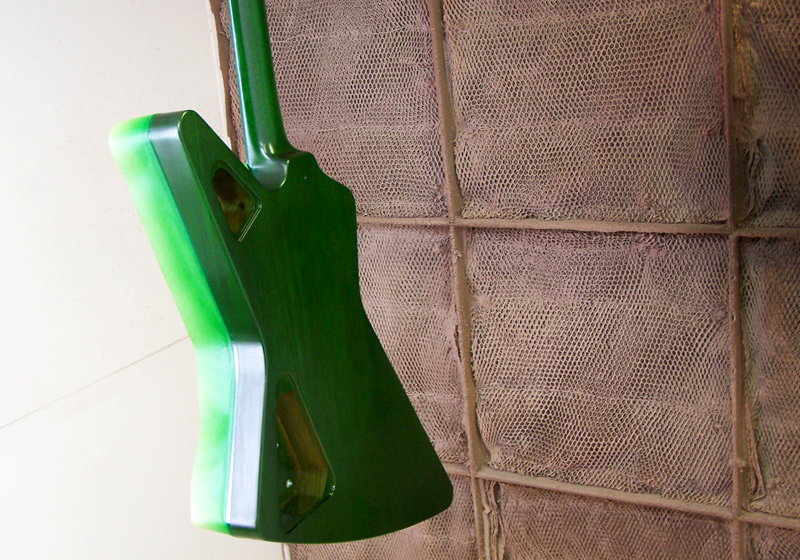
| Hard Rock StandardPosted on May 26, 2010When we get an order for a black Standard, as this one will eventually be, we switch over from our usual AAAA flame top to a hard rock maple cap. The reason isn't simply because we don't want to spray an opaque color over a beautiful maple top (though we don't). Rather, it's because we've found that hard rock maple provides the flattest wood surface over which to paint. As a result there is very little finish sinking on the guitar top. Here's Dave Brown rounding over the back edge of the Standard to a 1/8" radius on an inverted router. Dave started with Hamer in November 1989, working in the Arlington Heights shop. He began his career working "in the carpentry field for a home builder." When things got slow, his old friends Chris Nichols (who worked in the Hamer Neck Department) and Annette Ostrowsky (a long term Hamer team member who started out in the Finishing Department and ended as our Administrative Assistant) told him to "stop by, we're hiring." Dave earlier "knew that there was a guitar company in Palatine" (our prior shop) where he grew up. Needless to say, we were impressed with Dave and he's been with us ever since. In this photo Dave is drilling for the output jack. 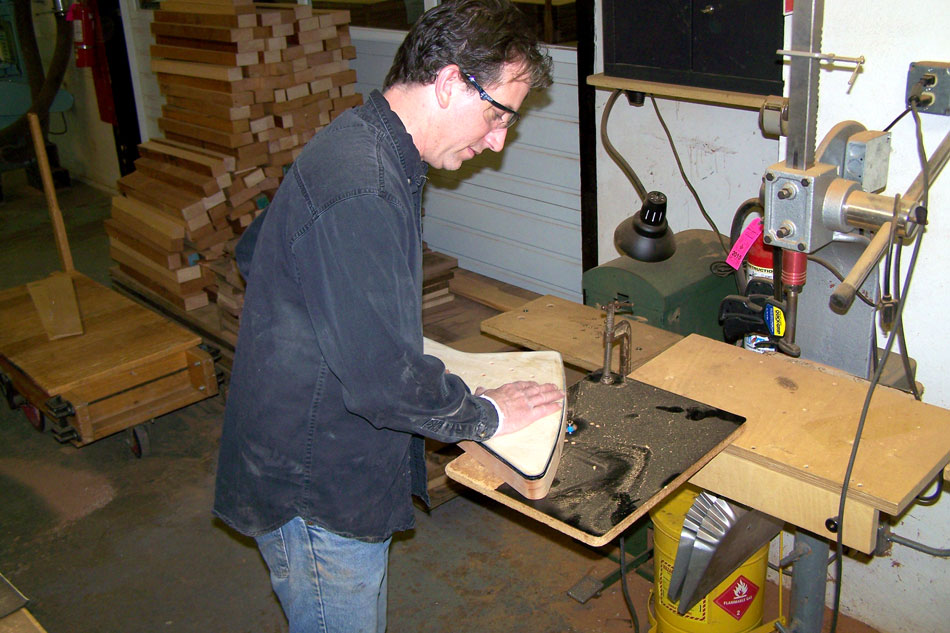

Dave has worked in every area within the Woodshop as well as performing some work in the Finishing Department. "I started off in the Neck Department" he reflects, continuing that he then learned the "Neck Mill, Rough Mill...I went to fingerboard production and then just worked in customs and stuff like that in Arlington." Dave has definitely made a name for himself as a Hamer custom builder. Dave is running a sheet of celluloid binding material over the jointer. By joining the binding he will have a straight edge to fit to the binding rout itself, insuring no gaps between the body and the binding. 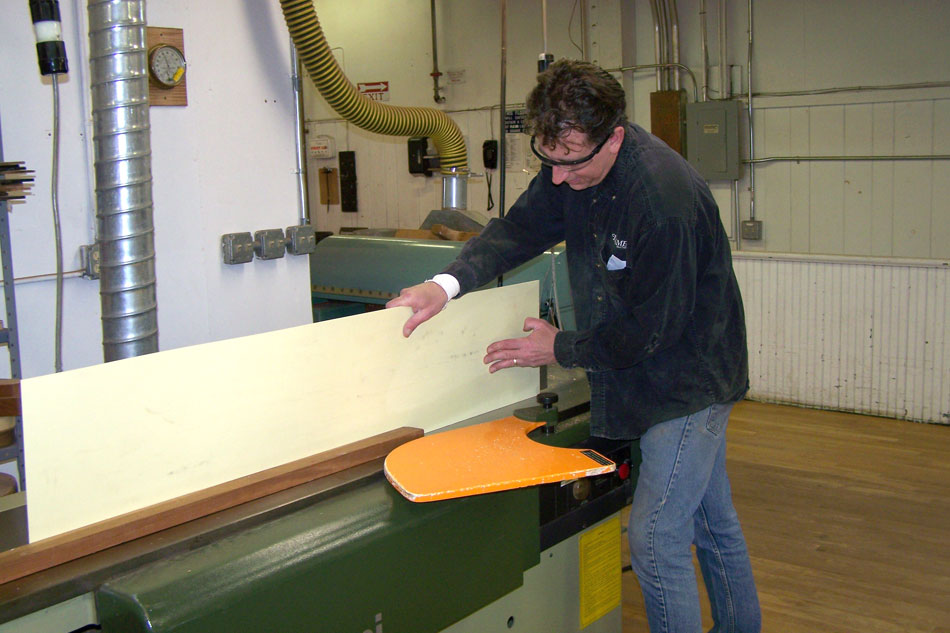
Dave "wanted to stay in the biz and there weren't too many guitar companies hiring in the Chicagoland area at that time." Little did he expect that the journey he commenced on would bring him to New Hartford, Connecticut. This Standard calls for Improv style binding and purfling, which is a four ply black and white layup. As such, Dave had to customize the binding rout to accept the wider layup. As Dave says tongue in cheek: "binding is always a fun adventure, especially pegheads and multiply." 
Though there will always be a sweet spot in his heart for Arlington Heights, Dave prefers the New Hartford shop because of the "lower production, more custom work and traveling with the guitar all the way through." That is, he is involved with nearly every woodworking stage when he builds a custom guitar. Tom Maule is lending a hand on the Standard, inlaying the mother of pearl crown inlays. 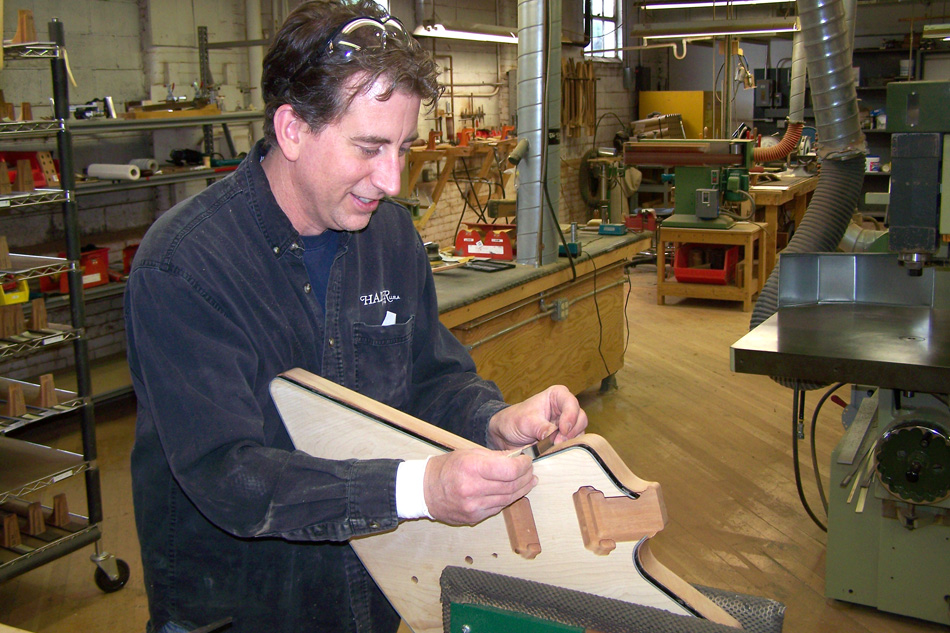
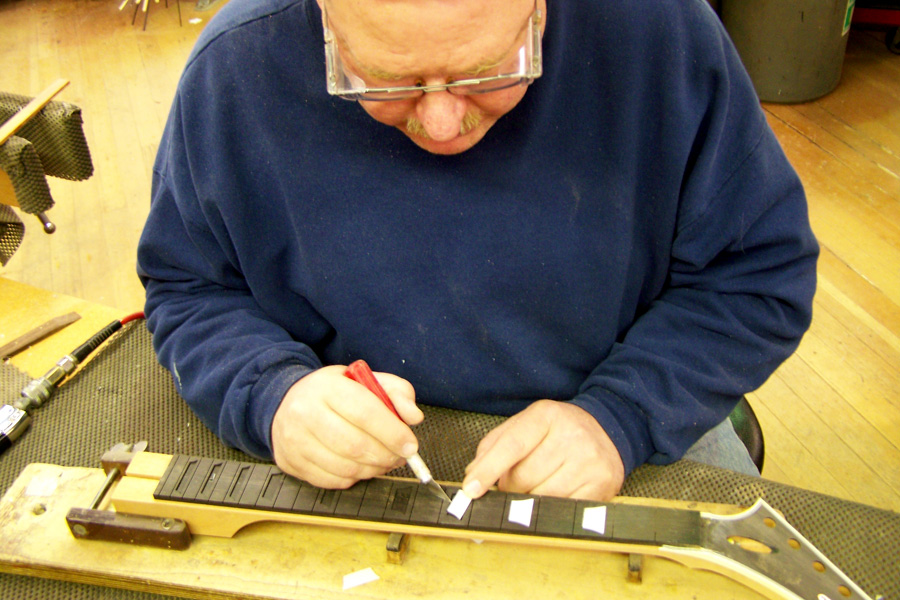

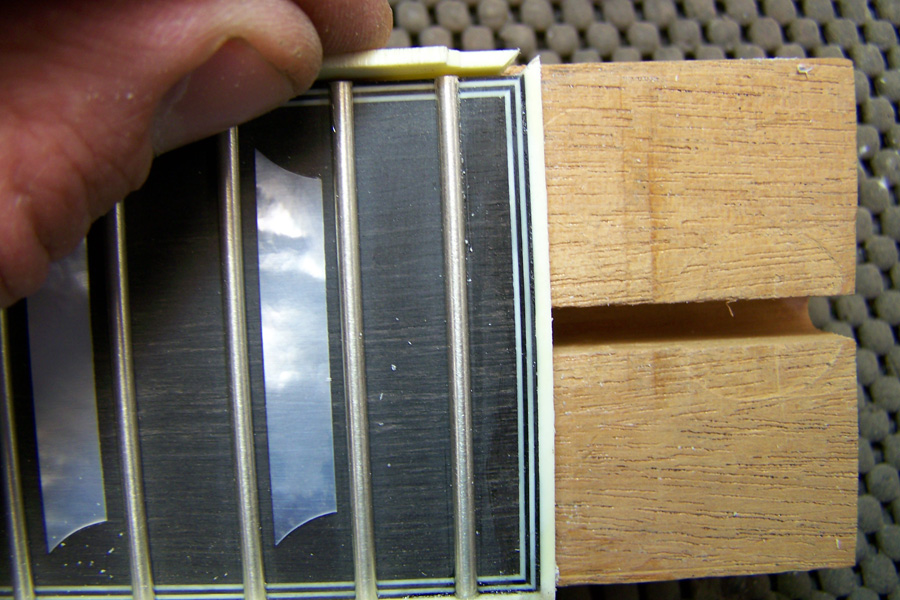
Here's a great view of piecing together the miter joint of the Improv binding and purfling that is dressing up this Standard. 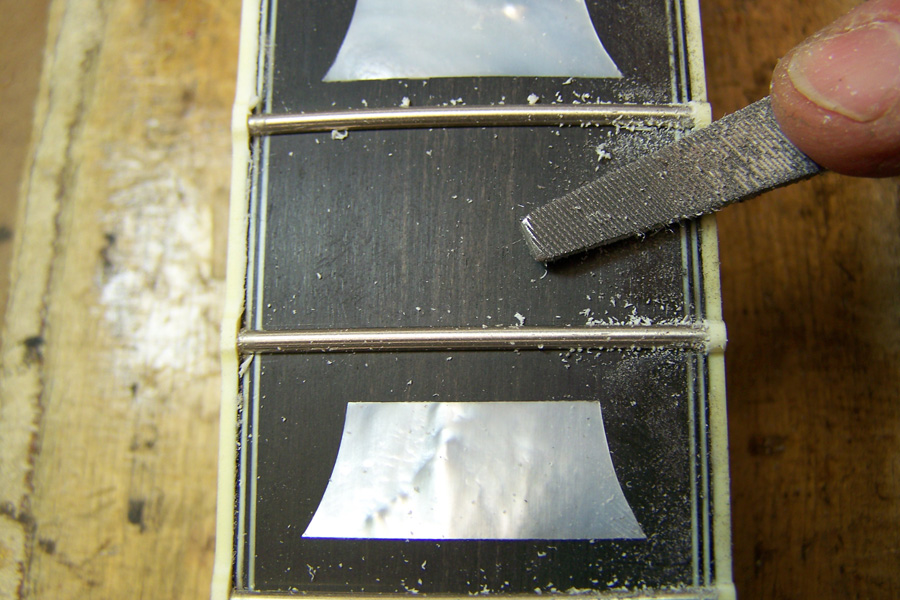
Dave's favorite "adventure": filing down the multi-ply fingerboard binding. 
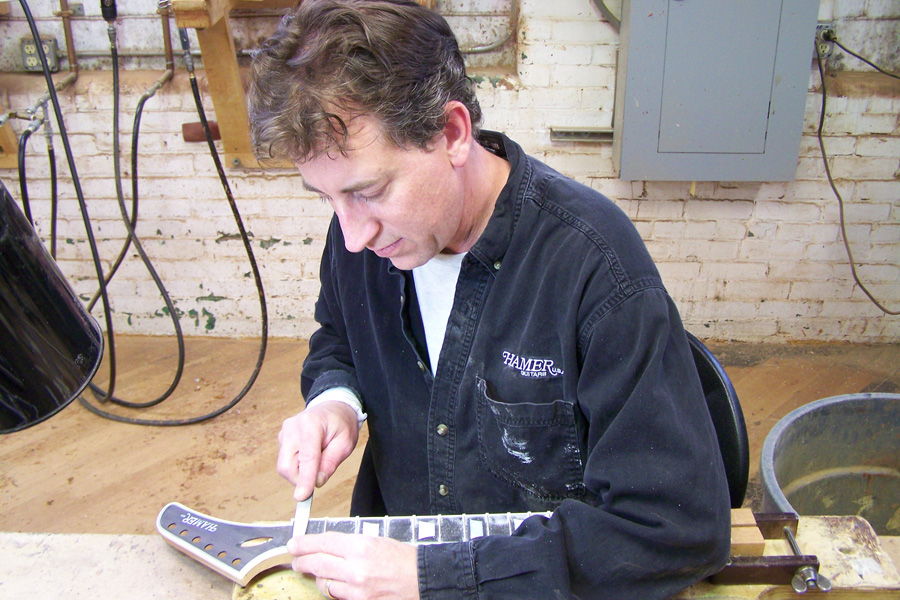
Dave has "always liked the Standards and Vs." "I guess I'm probably more traditional. The Studio Series and the Artist Custom always had a place in my heart. They're badass guitars that have always been a personal favorite." We previously had two separate serial numbering systems, one for Standards/Customs and one for our production guitars. The Standards/Customs were wood stamped while the production guitars were ink stamped. We now have one sequential numbering system, all of which are wood stamped. The first digit indicates the year that the guitar was built, in this case "0" for 2010. 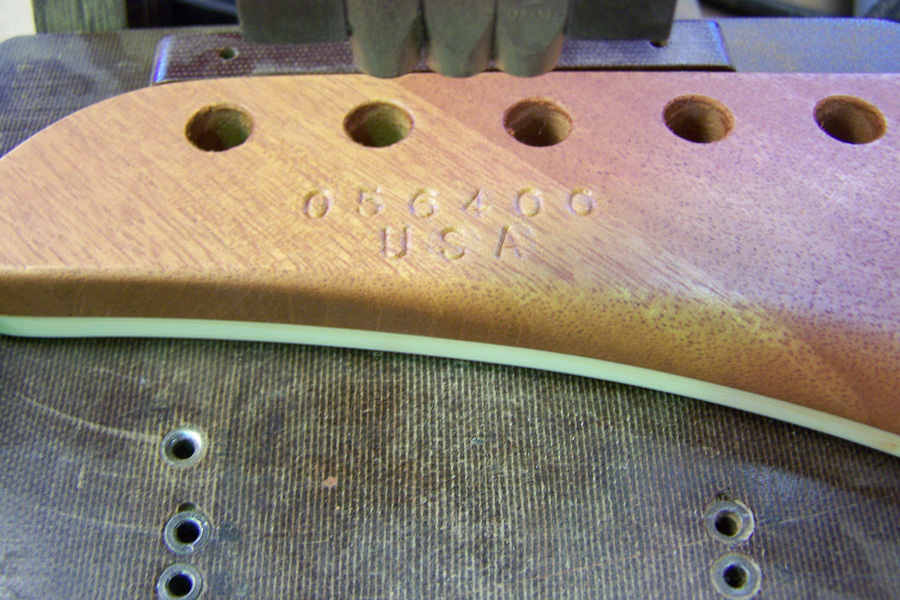
The body and neck are finally ready for glue up. It has become increasingly difficult to find the high quality mahogany wide enough for one-piece Standard bodies. Regarding wood, Dave muses: "It will be interesting to see what direction the wood industry will take, flame maple and mahogany big time." Dave also thinks it "nice to see that Brazilian is coming back." Having dedicated luthiers like Dave Brown on our team gives Hamer the ability to allow you to realize your dreams with custom guitars such as this Standard. 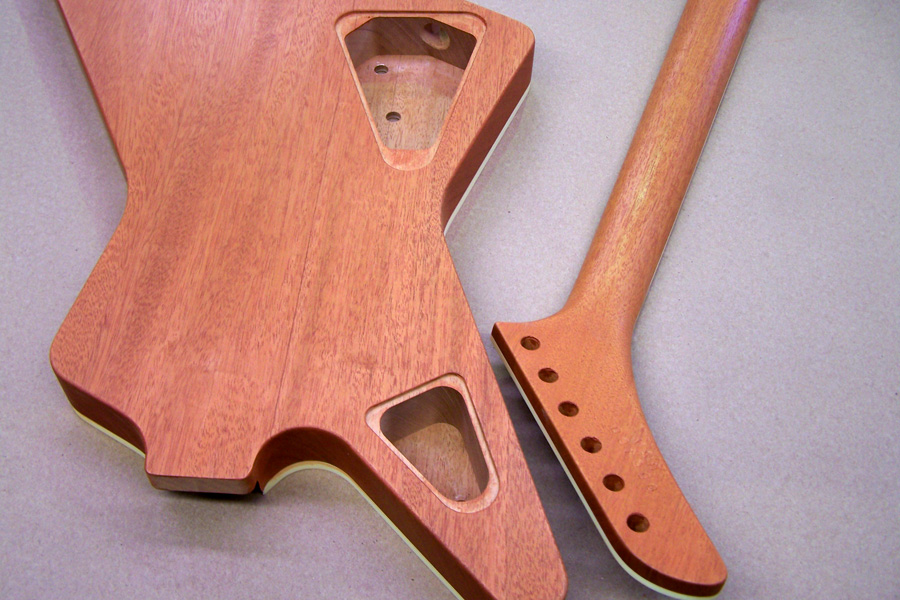
Previous Month
| Next Month
| | |||||||||||||||||||||||||||||||||||||||||||||||||||||||||||||||